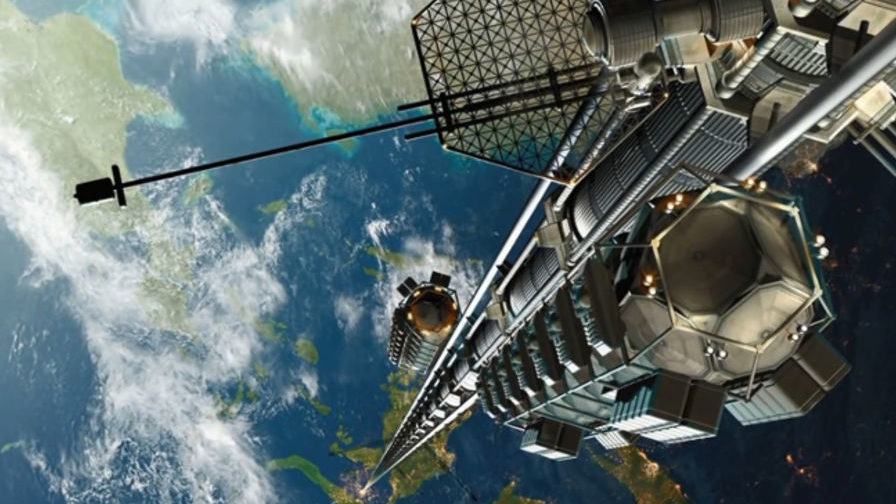Japanese company Obayashi Corp. has launched a project for a 36000 km high space lift to put the satellites into orbit.
A 36,000 kilometer high lift to unite earth and space. This is the phantasmagorical (and sometimes sci-fi) project launched by the Obayashi Corporation, one of the largest aerospace companies in Japan. The goal of Japanese engineers is to revolutionize contemporary aerospace engineering, particularly with regard to the launch of satellites. Today, the objects to be put into orbit are assembled on the ground and then launched into space with special vehicles. A practice that requires time and large sums of money, especially for the fuels used for the launch. To contain costs and air pollution, the Japanese have thought of a solution that allows objects to be transported in pieces and then assembled in orbit (thus reducing the amount of fuel needed) without the use of rockets. And the solution they found was a colossal 36,000 kilometer high space lift. To design it, Obayashi and put to work the engineers who built the Tokyo Skytree, the tallest tower in the world.
A 36000 km space lift for the transport of satellites
According to the project, the Obayashi lift will be able to transport “cabins” of 100 tons up to a height of 36000 km, ie in geostationary orbit. The lift will consist of 96000 km of carbon nanotubes and will be completed by a floating land port of 400 m in diameter and a counterweight of 12500 tons. The construction process and the materials to be used have been identified through computer simulations that take into account factors such as traction and elasticity. According to Obayashi’s plans, construction will be possible thanks to cables with a tensile strength at break of 150 GPA. In addition, the lift will be anchored to the Earth by means of a 12500-ton counterweight. Today’s technologies are not enough to carry out this project: to build cables with the required mechanical capabilities, for example, it will take at least 20 more years of research and design. However, the plan is realistic and will be a springboard for the construction of space elevators in the future – they assure Obayashi Corporation – space engineering has no boundaries.
